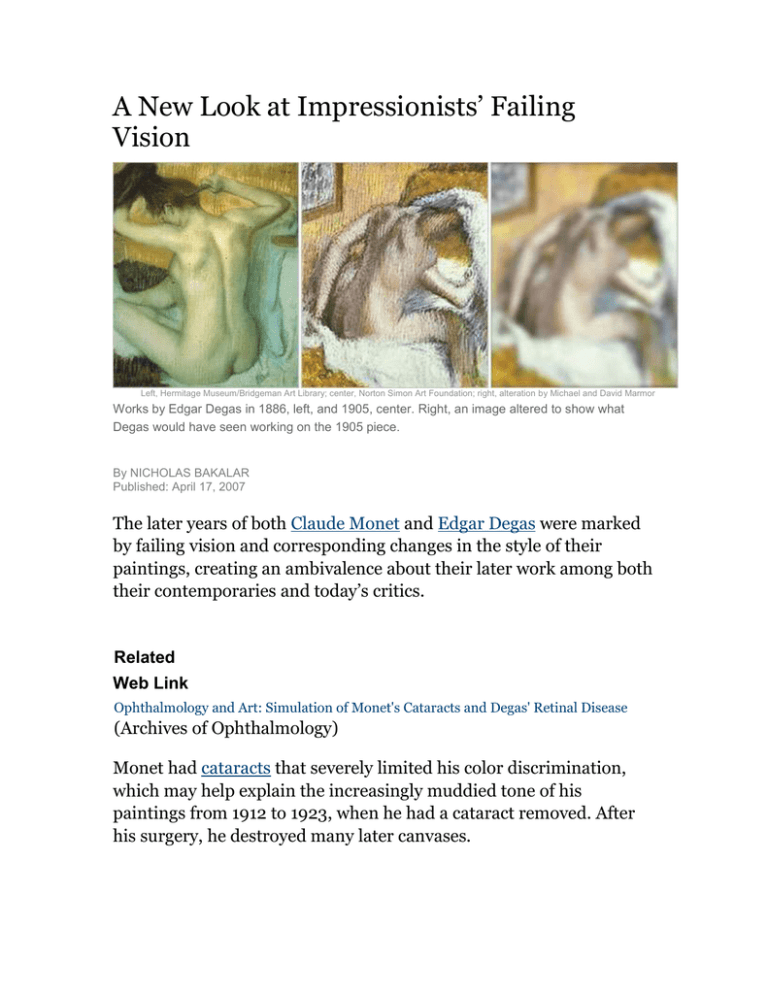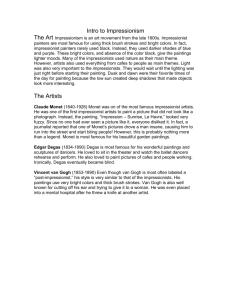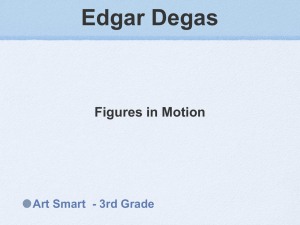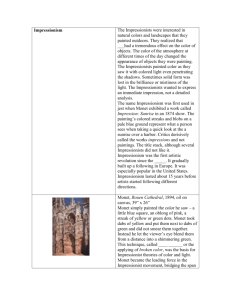New Look at Impressionists
advertisement

A New Look at Impressionists’ Failing Vision Left, Hermitage Museum/Bridgeman Art Library; center, Norton Simon Art Foundation; right, alteration by Michael and David Marmor Works by Edgar Degas in 1886, left, and 1905, center. Right, an image altered to show what Degas would have seen working on the 1905 piece. By NICHOLAS BAKALAR Published: April 17, 2007 The later years of both Claude Monet and Edgar Degas were marked by failing vision and corresponding changes in the style of their paintings, creating an ambivalence about their later work among both their contemporaries and today’s critics. Related Web Link Ophthalmology and Art: Simulation of Monet's Cataracts and Degas' Retinal Disease (Archives of Ophthalmology) Monet had cataracts that severely limited his color discrimination, which may help explain the increasingly muddied tone of his paintings from 1912 to 1923, when he had a cataract removed. After his surgery, he destroyed many later canvases. And in Degas’s work, the shading lines and details of the faces became increasingly blurred as his disease, probably a form of macular degeneration, progressed over 20 years. A French critic called his later sketches “the tragic witnesses of the battle of the artist against his infirmity.” In a recent article in The Archives of Ophthalmology, Dr. Michael F. Marmor, a professor of ophthalmology at Stanford, used computer simulations to create images of what these artists might have seen as their vision declined. “Here we can see ourselves what they were seeing through their eyes,” Dr. Marmor said. “Critics have known that these men had failing vision, but I don’t think they could appreciate what it meant to these artists. It gives both new respect for what they could do with limited vision, but also gives us reason to re-examine perhaps what these paintings mean in the evolution of these artists’ style and work.”








